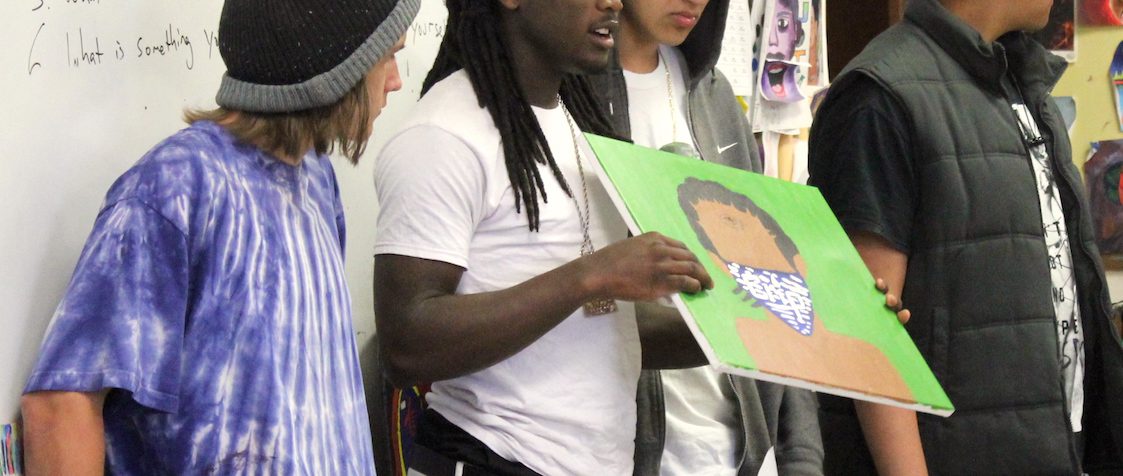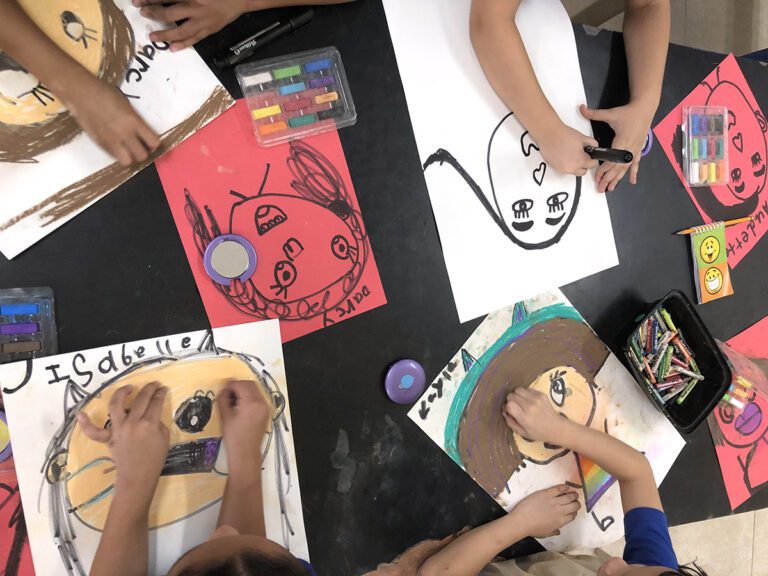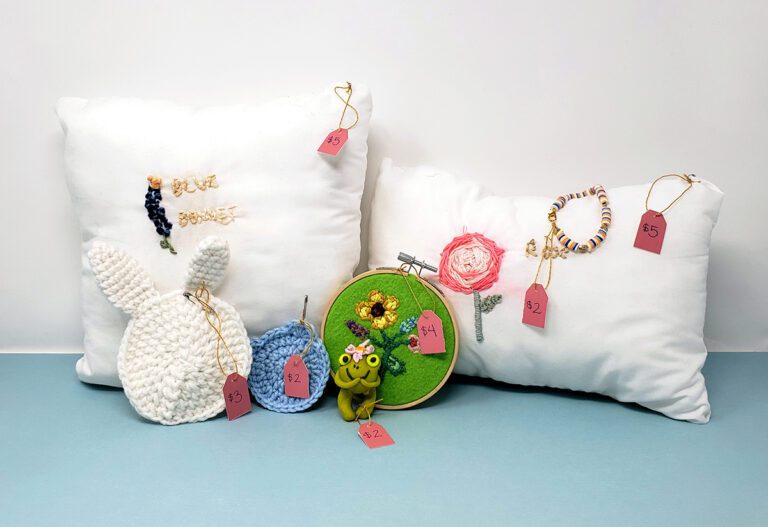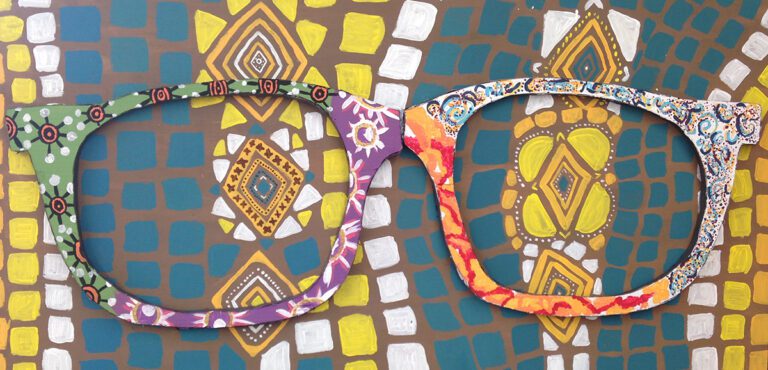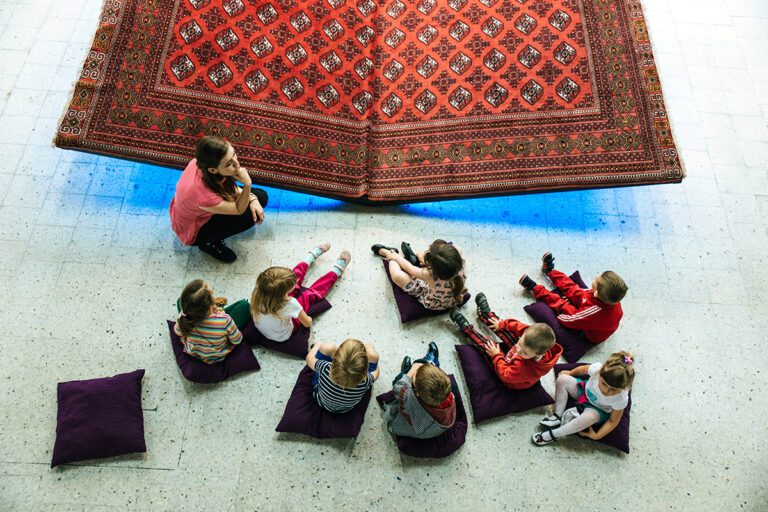Do you ever have students stand up in front of their peers to present their work in public? Public speaking is an important skill set to develop early on in adolescence. When students present their work to their peers, they face some of their deepest fears in an academic setting. They also build their artistic potential by defending their work and considering their audience in new ways.
This school year, consider incorporating public presentations into your art curriculum.

Curbing the Fear
It’s no secret that many people are afraid of public speaking, and students are no different. It can be terrifying to think about being in the spotlight, especially in front of peers. Many colleges require students to take a public speaking course as part of their general education requirements. For students who have little or no practice speaking in front of an audience, the mere thought of taking a public speaking course can create significant fear and anxiety. Therefore, students need more opportunities to speak in front of others during their school careers.
Art classes can provide the ideal opportunities for students to present their work. Creating the work themselves automatically makes them connected to the subject. Any student who creates a piece of art can defend the reasons its creation and make connections to what influenced their choices.
Presenting about art can also include opportunities to reflect in a public setting. Strengths and weaknesses can be identified, and peers can provide ideas for how to make those improvements happen. Explanation of artistic conventions, symbolism, intentions, or places the art piece should reside can all contribute to a meaningful presentation of an art piece.
Developing Leadership Skills
Districts, networks, and individual schools are accentuating the importance of skills that go beyond individual subject areas. Sometimes labeled “21st Century Skills” or simply “Leadership Skills,” students need to be able to identify and enhance skills and values that will help them succeed in academic settings and beyond. Communicating effectively is a leadership skill. Students can communicate through their art, through written artist statements, and also verbally in front of an audience.
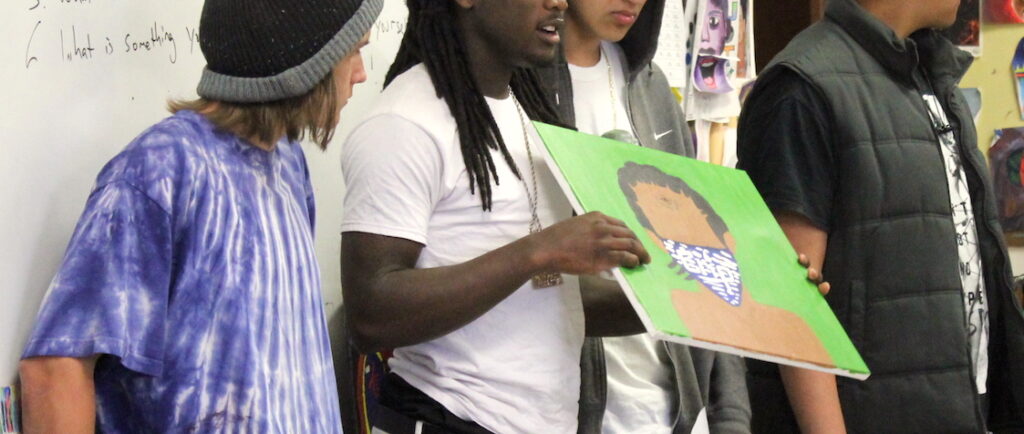
The leadership skill of public speaking has no limitations in potential. It can prepare students to become the leader of a nation, the leader of a community advocacy group, or the coach of an athletic team. It can also prepare individual artists to present their work at an exhibition opening or present a workshop at a national convention. Even if students do not have their goals set that high, they are almost certainly going to have an interview at some point in their lives. Public speaking is a beneficial skill for artists, academics, and average civilians alike.
Considering the Audience
If students know in advance they are going to be presenting their work, they are being held accountable for their choices. Often, artists can be seen as passive in the sense that the work speaks for itself. Many times, the responsibility of interpreting meaning and intention is placed on the audience rather than the artist.
When a student is going to present work in front of peers, they must defend their choices. If they are commenting on a social problem or stereotype, they must be ready to discuss why this is the subject of their creative investigation and their reasoning behind their depiction. Students who create work with no intention and little drive are going to have to admit this to their peers. Through a question and answer period after the presentation, students can ask serious and important questions. The accountability for actions and authenticity automatically increases when a public presentation is involved.
Building Students Skills
For those art educators who are reluctant to have students present their work, the key is scaffolding. It is important to plan practice time for students. Give students a sheet with questions and/or sentence starters to help them develop responses. Allow students to practice their presentations in small groups before going up in front of the room. When students do present, have them present while standing in groups so they have the support of peers beside them. Standing in groups can help some students feel like the spotlight is not entirely on them.
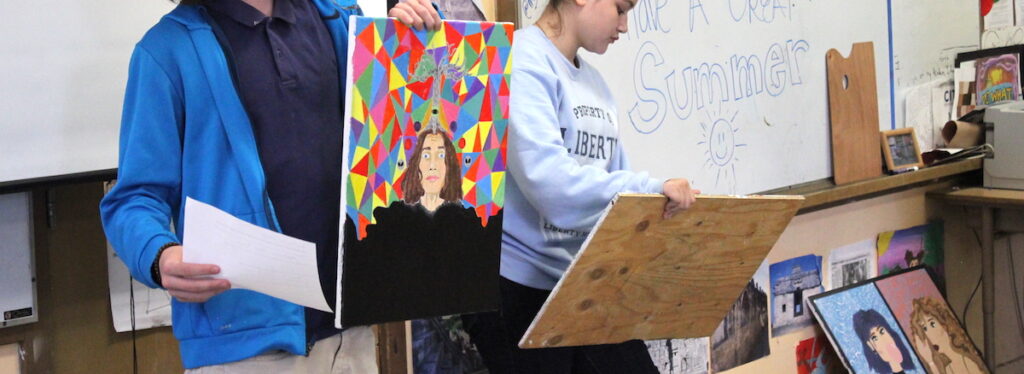
Public speaking is an important skill in its own right, and developing it in the art room can only help! Even if students defending their work in a public format is a part of your pedagogy already, there are ways to take it even further. Presenting work is something that can only become more elaborate and sophisticated if we reflect upon our own methods as educators. Let us provide students the opportunities to engage in leadership skills they might not get in any other academic setting.
What experiences do you have with student presentations in the art room?
Do you have any advice to offer others with student presentations?
Magazine articles and podcasts are opinions of professional education contributors and do not necessarily represent the position of the Art of Education University (AOEU) or its academic offerings. Contributors use terms in the way they are most often talked about in the scope of their educational experiences.
